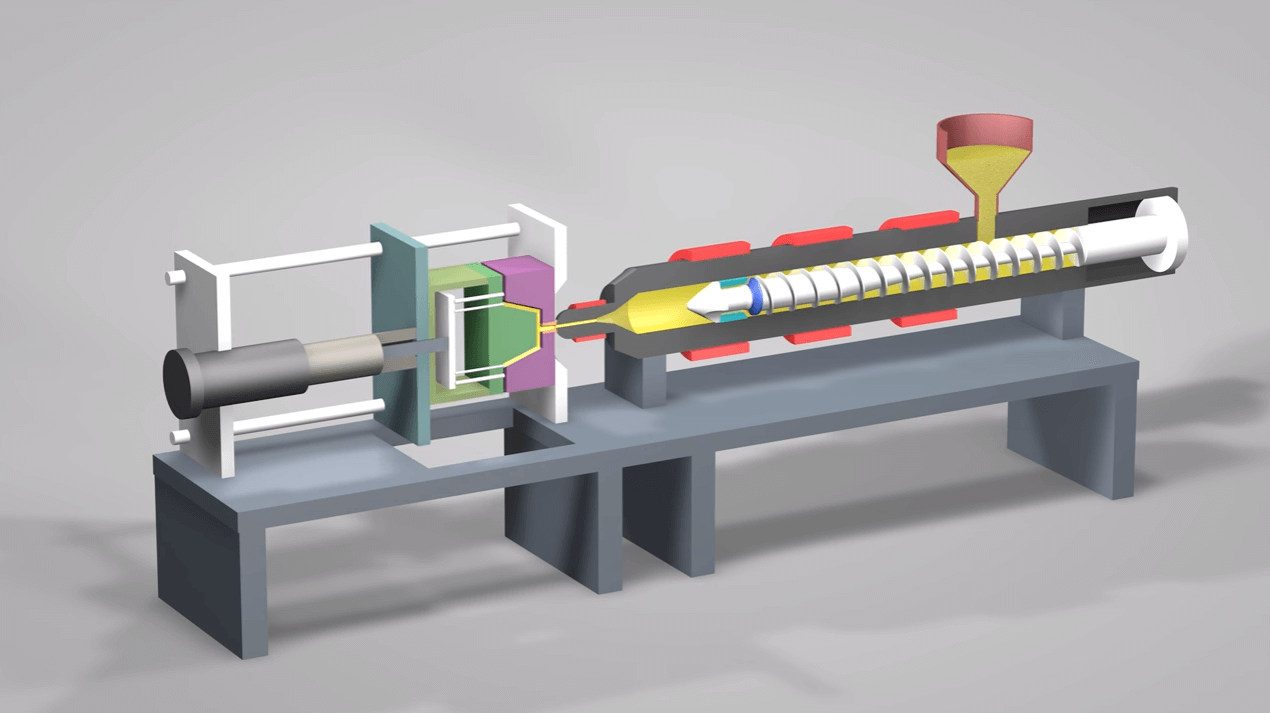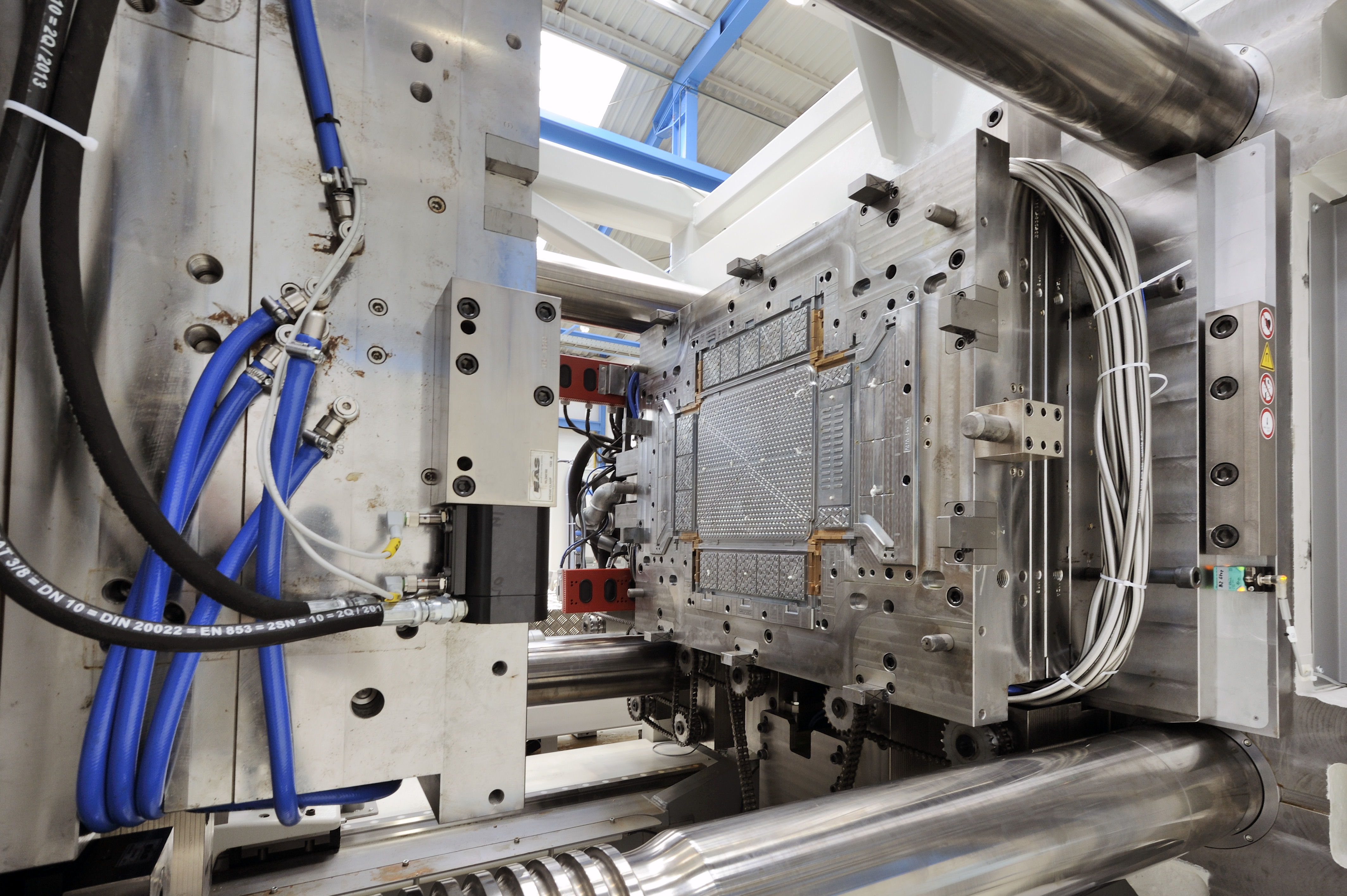The Effect of Plastic Injection Molding on Lowering Production Expenses and Waste
The Effect of Plastic Injection Molding on Lowering Production Expenses and Waste
Blog Article
Recognizing the Essentials of Plastic Injection Molding Processes
Plastic injection molding offers as a cornerstone of modern manufacturing, supplying a methodical method to producing complicated parts with precision. Exploring these vital components might expose just how even small changes can lead to substantial improvements in production end results, elevating inquiries concerning the capacity for innovation in this well established procedure.
What Is Plastic Injection Molding?
Plastic injection molding is an extensively utilized manufacturing procedure that transforms polycarbonate and thermosetting products into accurate and complex forms. This method is favored for its capacity to generate high quantities of identical parts with extraordinary accuracy, making it an indispensable approach in numerous sectors, consisting of vehicle, consumer products, and medical tools.
The procedure involves thawing the picked plastic material and injecting it right into a mold and mildew under high pressure. The mold, created to the requirements of the wanted component, permits the liquified plastic to form as it solidifies and cools down. As soon as the product has actually set, the mold and mildew is opened, and the completed component is expelled.
Plastic injection molding uses a number of benefits, including lowered waste, consistency in production, and the capability to incorporate intricate styles that may be testing with other manufacturing techniques. In addition, it supports a wide series of materials, each offering unique residential properties that can be customized for specific applications. As industries remain to introduce, plastic injection molding stays at the leading edge, allowing the growth of advanced items that meet evolving customer demands.
The Shot Molding Process
The injection molding procedure is a sophisticated strategy that includes numerous essential stages to generate high-grade plastic elements. Plastic pellets are fed into a warmed barrel where they are melted into a thick fluid. This molten plastic is then infused under high pressure right into a precision-engineered mold and mildew, which forms the material right into the wanted form.
When the mold and mildew is loaded, the plastic is permitted to cool down and solidify, taking the shape of the mold and mildew dental caries. Air conditioning time is vital, as it influences the cycle time and the final buildings of the molded part. After adequate cooling, the mold and mildew opens up, and the completed component is ejected utilizing ejector pins.

Products Made Use Of in Shot Molding
Numerous materials can be made use of in the shot molding procedure, each offering distinct residential properties that satisfy specific applications. The most typically utilized products include thermoplastics, thermosetting plastics, and elastomers.

Thermosetting plastics, like epoxy and phenolic materials, undergo a chemical modification during the treating procedure, leading to an inflexible, inflexible structure. These materials are optimal for applications needing high warm resistance and architectural honesty, typically utilized in vehicle components and electric insulators.
Elastomers, consisting of silicone and rubber-based products, supply versatility and resilience. Their one-of-a-kind residential or commercial properties make them ideal for applications that demand elasticity, such as gaskets and seals.
In addition, specialized materials like bio-based plastics and composites are getting grip for their ecological benefits and improved efficiency attributes, expanding the extent of shot molding applications in different industries. Understanding the buildings of these materials is critical for choosing the appropriate kind for certain tasks.
Advantages of Injection Molding
Injection molding attracts attention as a very efficient production procedure that offers countless benefits for generating complex parts with precision. One of one of the most substantial advantages is the ability to produce elaborate designs that would be difficult or difficult to accomplish with other approaches (Plastic Injection Molding). The procedure permits thorough functions and limited tolerances, making sure top notch components
In addition, shot molding is recognized for its fast production abilities, making it an ideal selection for high-volume manufacturing. Once the mold and mildew is produced, parts can be created rapidly, decreasing preparations and boosting total performance. This performance not only reduces manufacturing prices yet additionally supplies an one-upmanship in the market.
The versatility of materials used in shot molding better enhances its charm. A vast array of thermoplastics and thermosetting polymers can be utilized, enabling suppliers to select products that finest fulfill their certain needs, including heat, click over here stamina, and flexibility resistance.
Additionally, the process minimizes waste, as excess material can typically be recycled and recycled. This sustainability read this facet adds to a lowered environmental influence, making injection molding a liable manufacturing choice. Overall, the advantages of injection molding make it a recommended method for several markets.
Factors Impacting Item Quality
While many aspects can influence product top quality in injection molding, recognizing these components is essential for accomplishing ideal results. Trick elements consist of material option, refining specifications, and mold and mildew style.
Material selection plays a vital duty, as various polymers exhibit special residential properties that influence flowability, toughness, and thermal stability. Inadequate material selection can bring about issues such as warping or incomplete filling.
Processing parameters, including temperature, cycle, and stress time, need to be carefully regulated. Variants in these settings can cause disparities partially measurements and surface area coating. Exceedingly high temperature levels may trigger destruction of the polymer, while poor pressure can result in brief shots.
Mold layout is equally essential, as it establishes the circulation of the molten plastic and the cooling process. Improperly made molds might bring about uneven air conditioning prices, resulting in dimensional inaccuracies and recurring tensions.

Verdict
To conclude, plastic injection molding works as a critical manufacturing process that allows the effective production of high-quality components. Mastery of the injection molding procedure, including the understanding of products and the influence of numerous factors on product top quality, is important for attaining ideal outcomes. The benefits of this approach, such as cost-effectiveness and layout versatility, further highlight its importance across numerous industries, solidifying its condition as a recommended option for high-volume manufacturing.
Plastic shot molding offers as a keystone of modern manufacturing, providing a systematic approach to producing intricate elements with precision.Plastic shot molding supplies a number of benefits, including minimized waste, consistency in production, and the ability to integrate elaborate layouts that might be testing with various other manufacturing methods (Plastic Injection Molding). As sectors proceed to introduce, plastic shot molding stays at the center, allowing the growth of innovative products that satisfy advancing consumer needs
The injection molding process is an advanced strategy that entails several essential phases to create high-grade plastic components.In conclusion, plastic shot molding serves as a crucial production process that allows the reliable manufacturing of premium elements.
Report this page